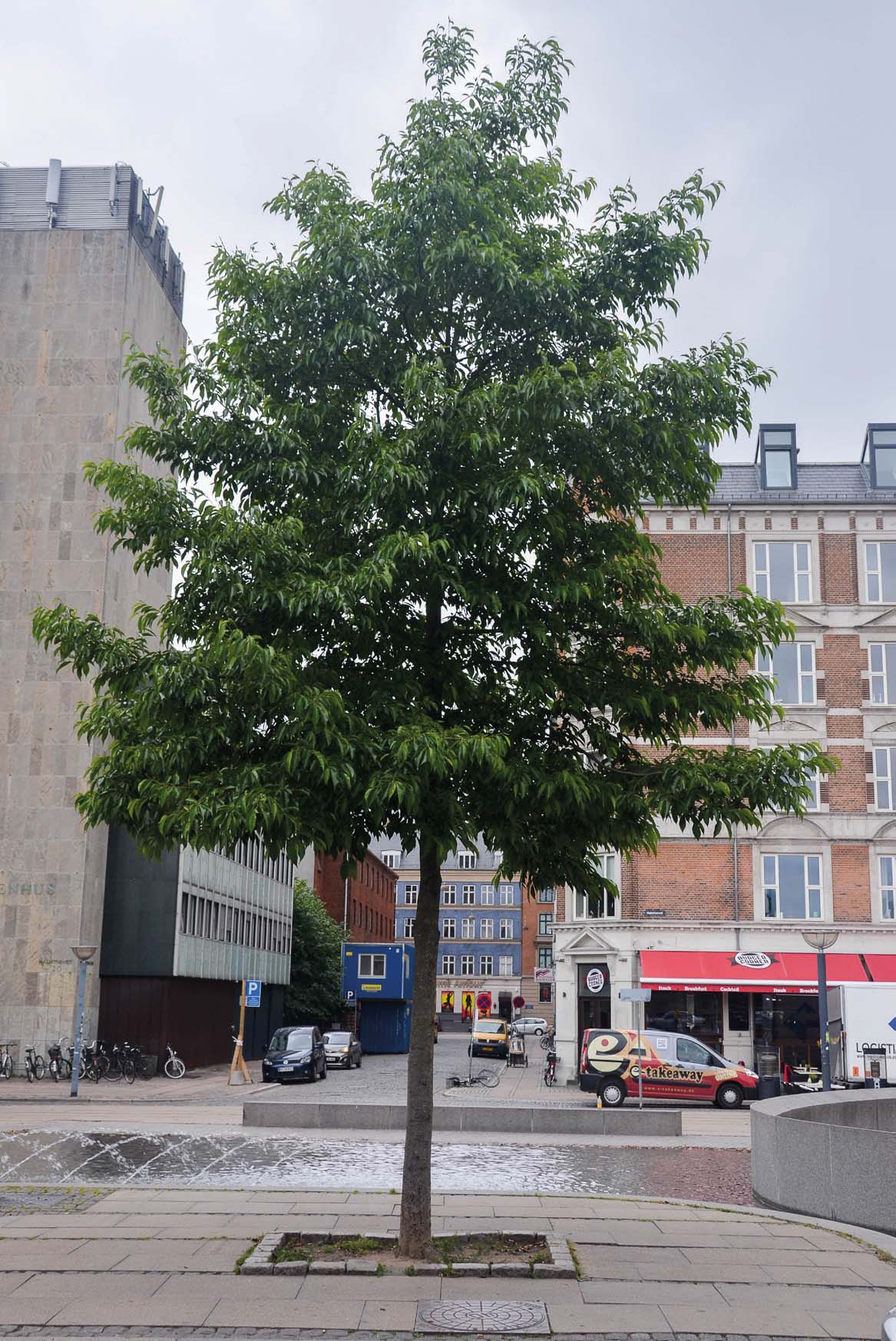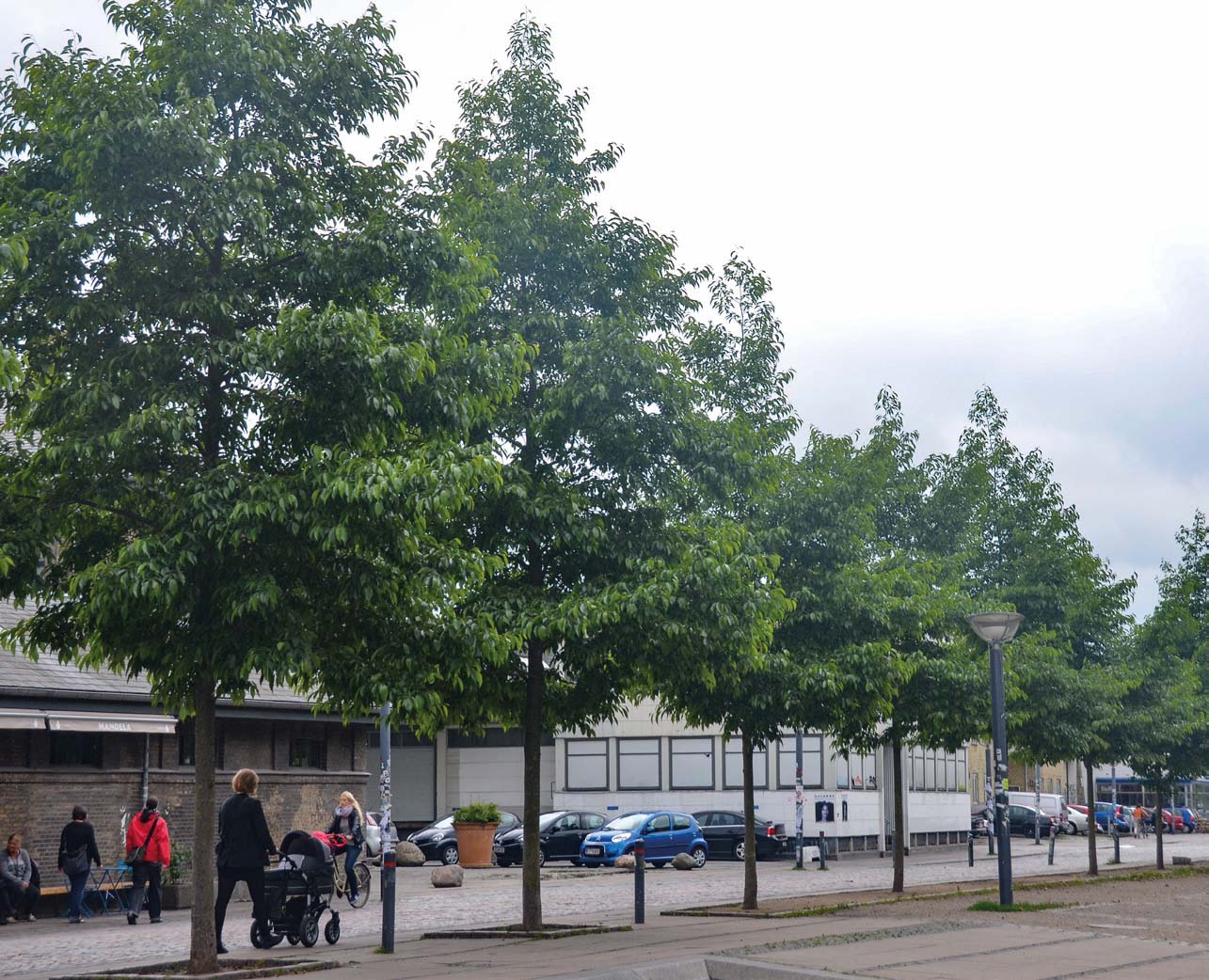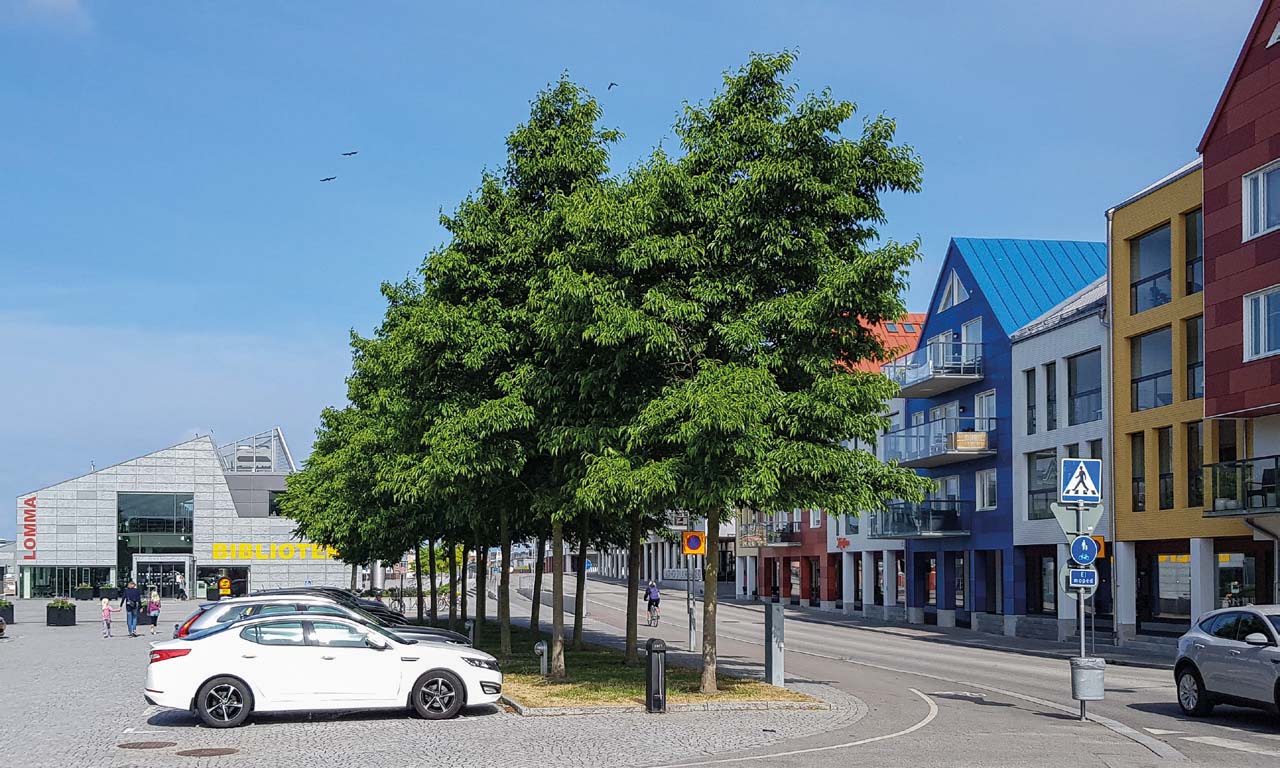The Plantsman’s Choice
Alders
Trees with important characteristics for future cities
Henrik Sjöman and Andrew Hirons
The alder genus includes about 25 species of both large and small trees and shrubs, mainly from the northern hemisphere. Most alders have their natural habitat in environments with humid and periodically wet conditions, but alders are distinct pioneer species that can colonise many different types of terrestrial environment, including fairly dry and poor-quality sites.
Alders have a very successful strategy for being able to grow in rather extreme places, especially in environments where access to good nutrition is limited: they live in symbiosis with actinomycete fungi of the genus Frankia, which form nodules on their roots. Frankia are capable of nitrogen-fixing so can convert atmospheric nitrogen into a form that alders can use. The ability to ‘produce their own nitrogen’ means that alders can handle conditions where, for example, temporary floods leach away many of the nutrients. Being able to control their nutritional supply themselves means that they do not have to withhold but can proudly shed their green leaves in the autumn without first getting autumn colour. Losing green, nutrient-rich leaves means that they also improve the soil very successfully, which benefits many herbs or shrubs growing beneath them.
This ability to satisfy themselves with nitrogen through symbiosis means that the more drought-resistant species such as Italian alder (Alnus cordata) and Spaeth alder (Alnus × spaethii) can have good, long-term prospects in, for example, structural soils. An important future use for alders will certainly be in stormwater management where tree plantations are designed to flood periodically.
Alders are often described as difficult to establish. This mainly applies to bare-rooted trees, which should be avoided, particularly at larger stock sizes. For best establishment consider using container-grown trees. The best planting time is considered to be early spring or late autumn. In general, it can be said that all alders are very wind-resistant and often retain their fairly upright form even in wind-exposed environments.
Spaeth alder, Alnus × spaethii
This very beautiful and cultivable alder is a hybrid between the Japanese alder (Alnus japonica) and the large-leafed alder (Alnus subcordata). It was introduced in 1908 by the world-famous Ludwig Späth nursery in Germany. Young trees of this hybrid develop a narrow pyramidal growth pattern where the side branches initially have a strongly upward orientation. As it gets older, the tree becomes wider and takes on a more rounded to conical shape, 15–20 metres high. Most Spaeth alders develop a straight continuous trunk. The leaves are large, 8–15 cm long, and in the spring are noticeably red-violet before they gradually change to a fresh dark green with a clearly shiny upper side. Young specimens grow very strongly in park environments, and the species has good wind tolerance. Its main use is in park environments or in paved surfaces where a generous rooting volume is available.





